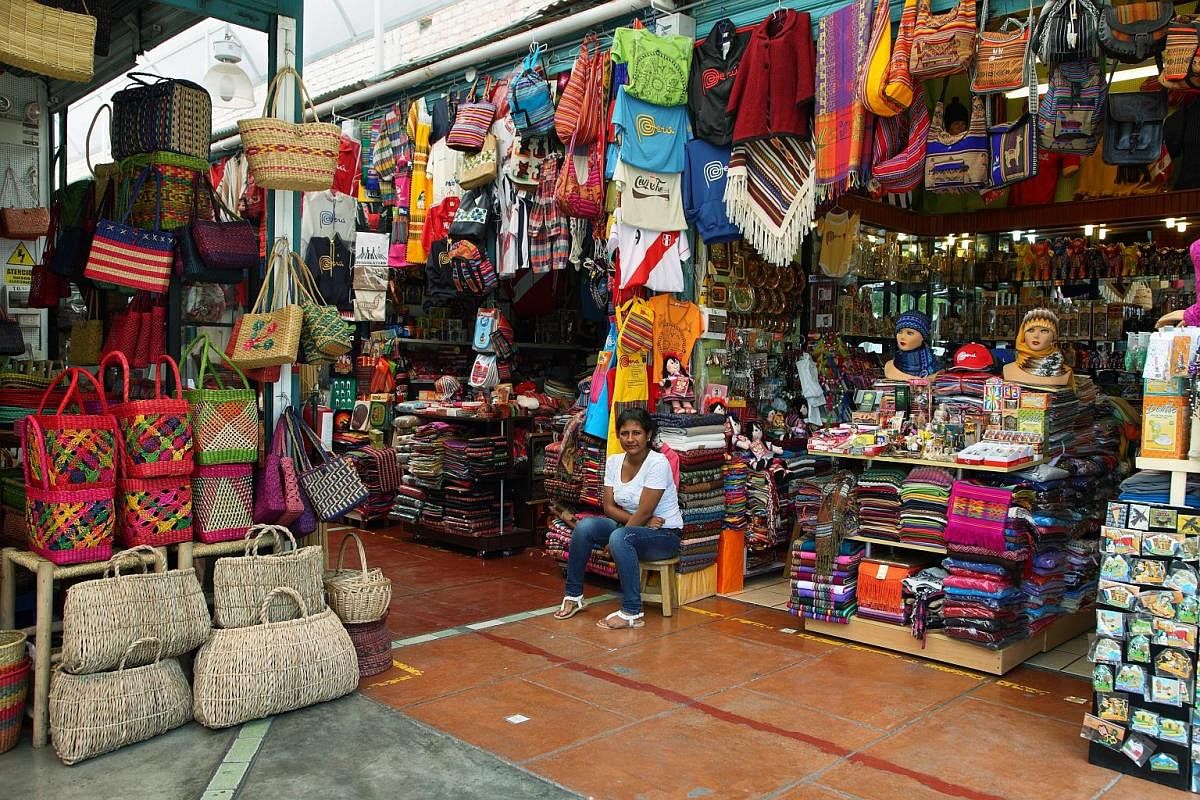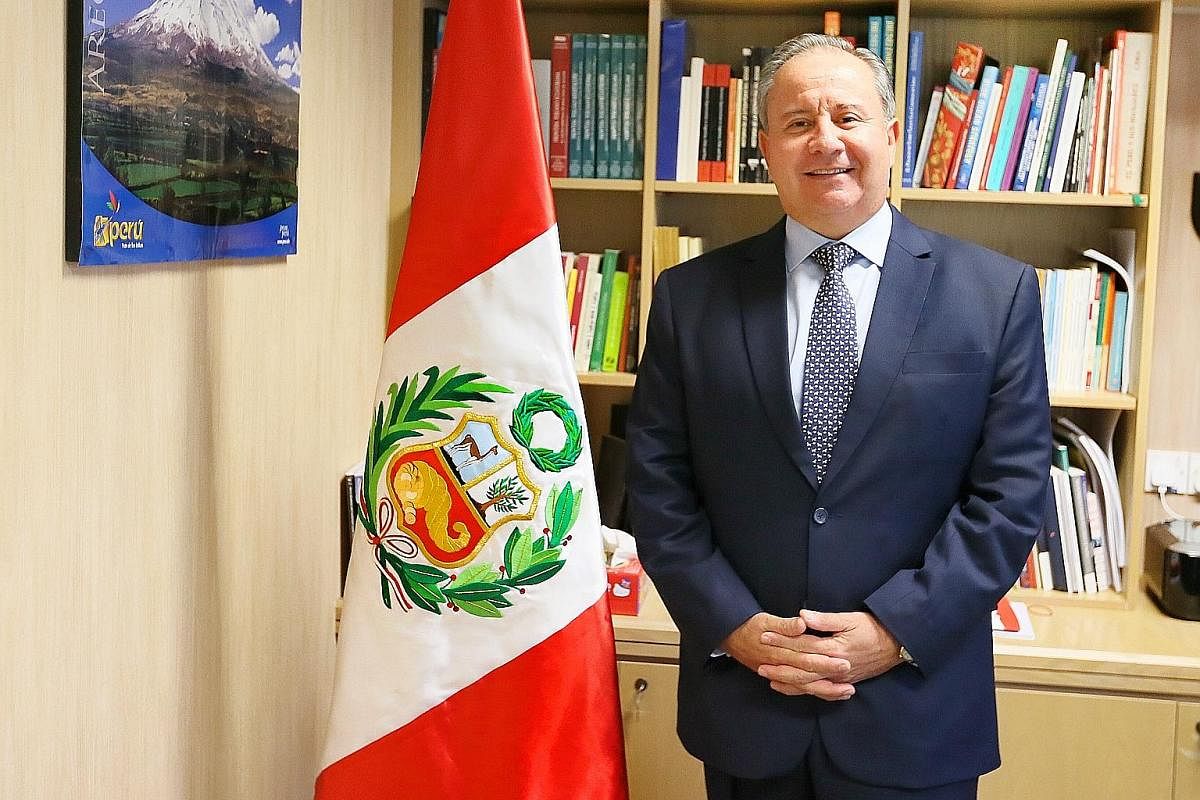-
Getting there
-
The shortest route from Singapore to Lima is to fly via Paris or Amsterdam, which takes about 301/2 hours.
TIPS
• Three or four days are usually enough to explore Lima. Visit during summer, from January to March, when the weather is at its best.
• People in Lima are very friendly, but not many outside of the Barranco and Miraflores districts speak English. In Peru, only people with a university degree or those who work in the tourism sector are likely to speak English. In the small mountain towns, you may have trouble communicating.
• Most of central Lima and the Barranco and Miraflores districts are safe. Elsewhere, you should not walk alone at night, especially if you are a woman.
• Singaporeans might be surprised by how cosmopolitan people in Lima are. You will see many people who are half-Chinese, half-Spanish, part-Japanese and indigenous. In Peru,we have a saying that Peruvians are like potatoes. We have yellow potatoes, black potatoes, purple potatoes, potatoes from all colours and all altitudes, but we are all still potatoes.
• While people in the city are more well off and have access to water, electricity and education, the people who remain in the mountains, who maintain their old habits and still speak their indigenous languages, are often poor and do not have electricity. There are also indigenous groups who live in the jungle who have never had contact with outsiders at all and the government does not allow any visitors to go there because these people would not be able to handle our germs.
Travel Black Book: Ambassadors Series
Lima, good food capital of Peru
The best of home: Ambassadors to Singapore provide an insider's guide to their favourite destinations


Who: Mr Manuel Talavera, the Ambassador of Peru in Singapore, 58. He and his wife, Heidy Calonge de Talavera, 58, have lived in Singapore for four years.
Favourite destination: Lima, my hometown.
It is part of my personal history and over the years, I have seen how Lima has opened up to the world and grown to become a dynamic metropolis as well as the gastronomic capital of Latin America.
Every time I return, I find a city that is even more vibrant and more cosmopolitan.
SEE
In Peru, the period before the Spanish arrived in the 1500s is called the pre-Columbian era, when the Inca Empire and several other cultures before them inhabited the country.
Then the Spanish ruled Peru for almost 300 years before it gained independence in 1821.
Museo Larco (www.museolarco.org) is my favourite museum in Lima. It is an interesting archaeological museum housed in a beautiful 18th-century viceregal mansion, which was built on a pre- Columbian pyramid from the 7th century.
Visitors can explore 3,000 years of pre-Columbian Peruvian history through more than 45,000 archaeological objects, such as erotic art, gold and silver jewellery.
For a better understanding of Peruvian culture, I recommend going to Brisas del Titicaca (brisasdeltiticaca.com), a cultural centre in downtown Lima where dance performances are held every night.
Every town in Peru has its own culture and folklore, which are displayed through its unique dance.
You can see its history - whether it was allied with the Spanish, whether it suffered hardship - through its costumes and rhythms of the dance.
I also recommend going to Miraflores or Barranco, districts which not far from the centre of Lima and also by the sea.
There, you can take surf lessons and go parasailing. It is also an amazing place to watch the sun set, particularly from the La Marina lighthouse in Miraflores.
EAT
Lima is the gastronomic capital of Latin America. For the past few years, people have been coming from all over the world just for a gastronomic tour.
Of The World's 50 Best Restaurants, two of the top 10 are in Lima. Nine of Latin America's 50 Best Restaurants are also in Lima.
Why do we have such good gastronomy? I think there are a few reasons.
First, Lima is a big city with about 10 million inhabitants who have come from all over Peru.
We also have had waves of immigration from Europe over the centuries, mainly the Spanish, who also brought people from West Africa, and Italians.
Also, in the 19th century, more than 150,000 Chinese, primarily from Guangdong, immigrated to Peru and, in the early 20th century, we also had a large immigrant population from Japan - who inter-married, started familiesand are now very much Peruvian.
Second, we have more than 80 micro-climates which provide a vast variety of unique native produce - we have 3,000 kinds of potatoes.
The micro-climates also make it possible to reproduce almost every ingredient grown elsewhere, so when the different migrants came to Peru, they often planted and grew the produce they used back home and incorporated it into local cuisine.
Third, we have talented chefs, many of whom trained abroad and who realised they could cook unique local ingredients in new and different ways.
Chef Virgilio Martinez is at the forefront of this movement and together with his chef-wife Pia Leon, he runs Central (www.centralrestaurante.com.pe), the best restaurant in Latin America and the fifth best in the world.
He has created an avant-garde Peruvian menu, where he offers 16 or 17 small dishes, each focusing on ingredients from a particular micro-climate.
The menu takes diners on a culinary journey from 25m under the sea off Peru all the way to 5,000m high in the Andes Mountains.
It is an interesting and creative experience which costs about US$150 (S$203) a person. Book well in advance to get a table.
For more typical Peruvian food, head to a huarique, a small, often family-run restaurant or cafe which serves traditional home-cooked meals using long-held family recipes. Dishes are simple and made to order.
My favourite Peruvian dish is ceviche, raw fresh fish which has been lightly cured in lime juice with some fresh chilli or onions for extra flavour. My favourite is made of corbina (croaker fish), a fleshy white fish.
You can get good ceviche almost everywhere in Lima, but I recommend La Rana Verde (bit.ly/2wUORJW), a seafood restaurant whose name oddly translates to "The Green Frog", in the seaside neighbourhood of La Punta.
Good ceviche can also be found at any restaurant or cafe near the small port in Barranco.
Go to the seaside, have a ceviche with a beer while watching a football game and you will be like one of the locals.
We are also famous for our pollerias, restaurants which serve rotisserie-style chicken with French fries and different sauces, such as sour chillies, mayonnaise or mustard, on the side.
Depending on the location, a half chicken with fries will cost about US$2. It is a national favourite.
There are more than 4,000 Peruvian-Chinese restaurants in Lima. Lima has the biggest Chinatown in Latin America and Chinese food is a staple of the Peruvian diet.
We call these restaurants and the food they serve "chifa", which comes from the Chinese words "chi fan", or eat rice.
One of our national dishes, lomo saltado, is a stir-fry of beef marinated in vinegar, soya sauce and spices, onions and tomatoes and is cooked in a wok and served with French fries and rice on the side.
A pisco sour cocktail is also very typical of Peru.
Pisco, a grape brandy made in Peru, is very strong, often about 40 per cent alcohol. But when it is mixed with ice, lime and sugar in a pisco sour, you will hardly know you are drinking any alcohol at all.
The flavour is very pleasant and everyone gets happy, but you should never have more than three drinks.
A good bottle of pisco costs US$15 to US$35. The liquor cannot be made cheaply, so if you see a cheap bottle, it probably is not real.
A good brand of pisco is Biondi.
If you are in downtown Lima, go to the bar at Hotel Maury (www.hotelmaury.hoteles). The barman there, Don Cornelio, is very old, very friendly and he serves the best pisco sours in town.
Tell him I sent you.
PLAY
If you are in Lima in October, do not miss the procession of the Lord of Miracles, even if you are not Catholic.
Its origins lie in colonial times when a slave, brought over from Angola, drew the image of Christ on the walls of a hut at the Pachacamilla plantation, near Lima in the 17th century.
The image stayed on the wall despite several attempts to erase it and it even survived a major earthquake in 1745, which levelled all of the surrounding buildings.
After that, this image was moved to a church, where it became the most venerated image in Lima.
The procession is the main Catholic celebration in Peru and one of the largest processions in the world. Hundreds of thousands of people come from all over South America to attend it, dressed head to toe in purple in Christ's honour.
If you are an archaeology lover, I recommend visiting Caral, the oldest-known city of the Americas located in the Supe Valley about 200km north of Lima.
The 60ha Unesco World Heritage Site was built 4,500 to 5,000 years ago, which makes it as old as some of the world's oldest cities in Mesopotamia, Egypt and India.
There are six stone pyramids, amphitheatres, altars and plazas. It is best to go with a guide who will explain the history and interesting details.
SHOP
Peru has exported gold and silver for centuries and has a strong metallurgical tradition.
If you want high-quality, exclusive products, go to the stores of jewellery brand Ilaria (www.ilariainternational.com), or make an appointment at the home-atelier of jewellery artist Ester Ventura (www.esterventura.com), who is known for pieces inspired by the art of ancient Peruvians, but constructed using modern techniques.
If you are looking for more typical local craft products, visit an Inca Market.
The two main ones are on La Marina Avenue in the San Miguel district, and the Petit Thouars market in Miraflores.
Many jewellery items at these markets are made of mixed metals - they are rarely pure silver or gold - and you can negotiate the price.
A unique souvenir to consider is an "akeko", a male doll, often given as a gift to family or friends.
You dress the doll with fake American dollars, a fancy car or a big house, in the hope that these are the things the recipient will have soon. You can find a good "akeko" for about US$10.
If someone tries to sell you an antique, do not buy it. It is either a fake or, if it is real, it is illegal. Real antiques cannot be taken out of the country.
STAY
Stay in Barranco or Miraflores, seaside districts where you can enjoy the sea and restaurants, go shopping or spend time on the beach.
Any hotel in these areas will be good and very safe.
You can walk the streets safely at 3am - there are regular police patrols - and many people here speak English.
Join ST's Telegram channel and get the latest breaking news delivered to you.
A version of this article appeared in the print edition of The Sunday Times on September 03, 2017, with the headline Lima, good food capital of Peru. Subscribe


